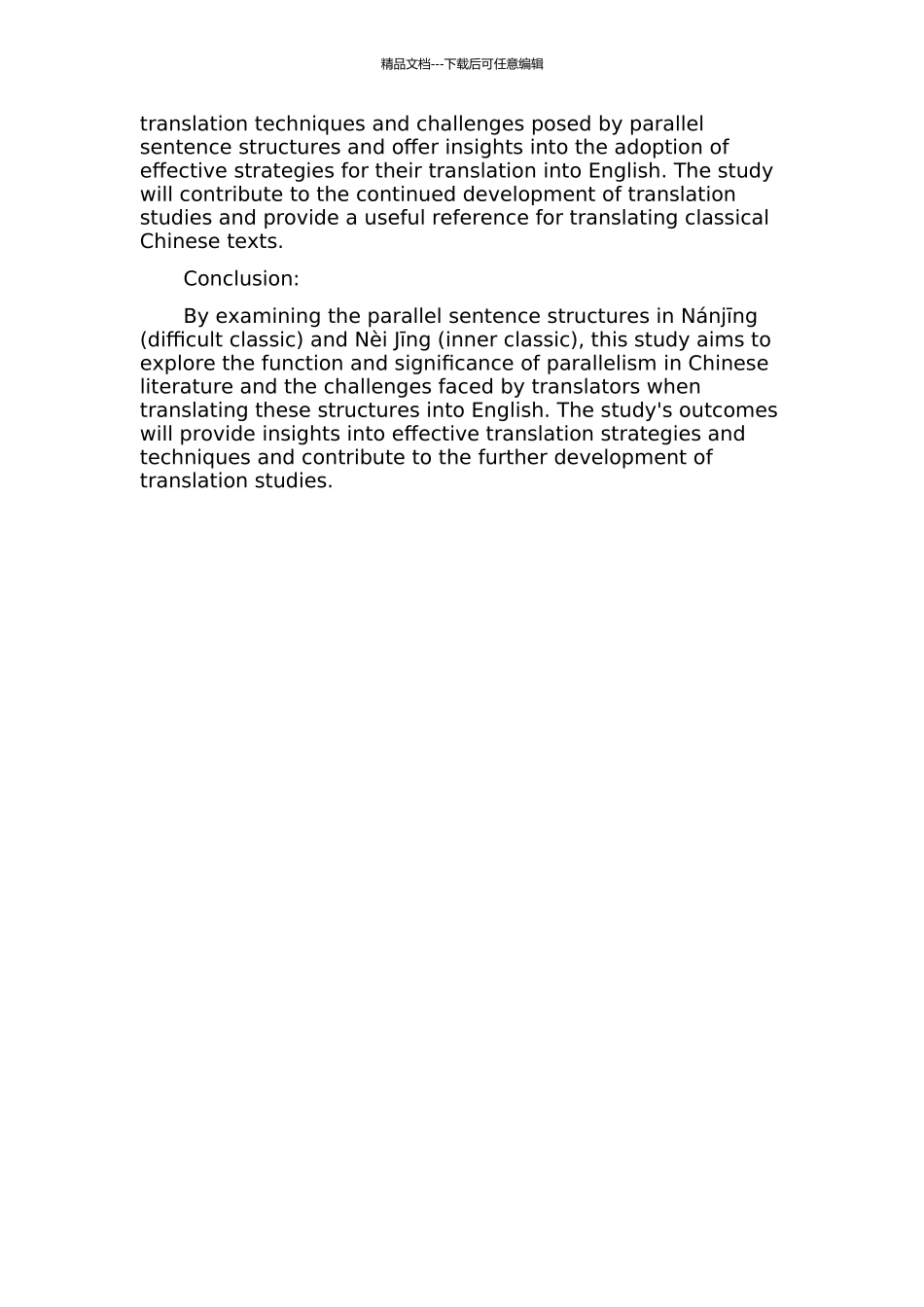精品文档---下载后可任意编辑《难经》和《内经》排比句式英译讨论的开题报告Title: A Study of the Translation of Parallel Sentence Structures in Nánjīng (difficult classic) and Nèi Jīng (inner classic)Introduction:Nánjīng and Nèi Jīng are two of the foundational texts of traditional Chinese medicine. Both texts are written in classical Chinese and employ parallel sentence structures, which are a significant characteristic of Chinese literature. Parallelism is generally used for emphasis and clarity, and it frequently appears in classical Chinese texts. This study aims to examine the techniques and challenges in translating the parallel sentence structures of Nánjīng and Nèi Jīng into English.Research Questions:1. How do parallel sentence structures function in Nánjīng and Nèi Jīng, and what is their significance?2. What are the common translation techniques used for parallel sentence structures in Chinese literature, and how are they applied to Nánjīng and Nèi Jīng?3. What are the challenges that translators face when translating parallel sentence structures in Nánjīng and Nèi Jīng?Methodology:This study will use a qualitative research approach, analyzing the parallel sentence structures in Nánjīng and Nèi Jīng and their translations into English. The researchers will first identify the parallel sentence structures in the texts and explore their function and significance in Chinese literature. The study will then examine the translation strategies and techniques adopted by translators of Nánjīng and Nèi Jīng into English, analyzing their effectiveness and accuracy. Finally, the study will investigate the challenges faced by translators when translating parallel sentence structures in Nánjīng and Nèi Jīng.Expected Outcomes:This study will provide a better understanding of the parallel sentence structures in Nánjīng and Nèi Jīng and their role in Chinese literature. The study will also identify the 精品文档---下载后可任意编辑translation techniques and challenges posed by parallel sentence structures and offer insights into the adoption of effective strategies for their translation into English. The study will contribute to the continued development of translation studies and provide a useful reference for translating classical Chinese texts. Conclusion:By examining the parallel sentence structures in Nánjīng (difficult classic) and Nèi Jīng (inner classic), this study aims to explore the function and significance of parallelism in Chinese literature and the challenges faced by translators when translating these structures into English. The study's outcomes will provide insights into effective translation strategies and techniques and contribute to the further development of translation studies.

